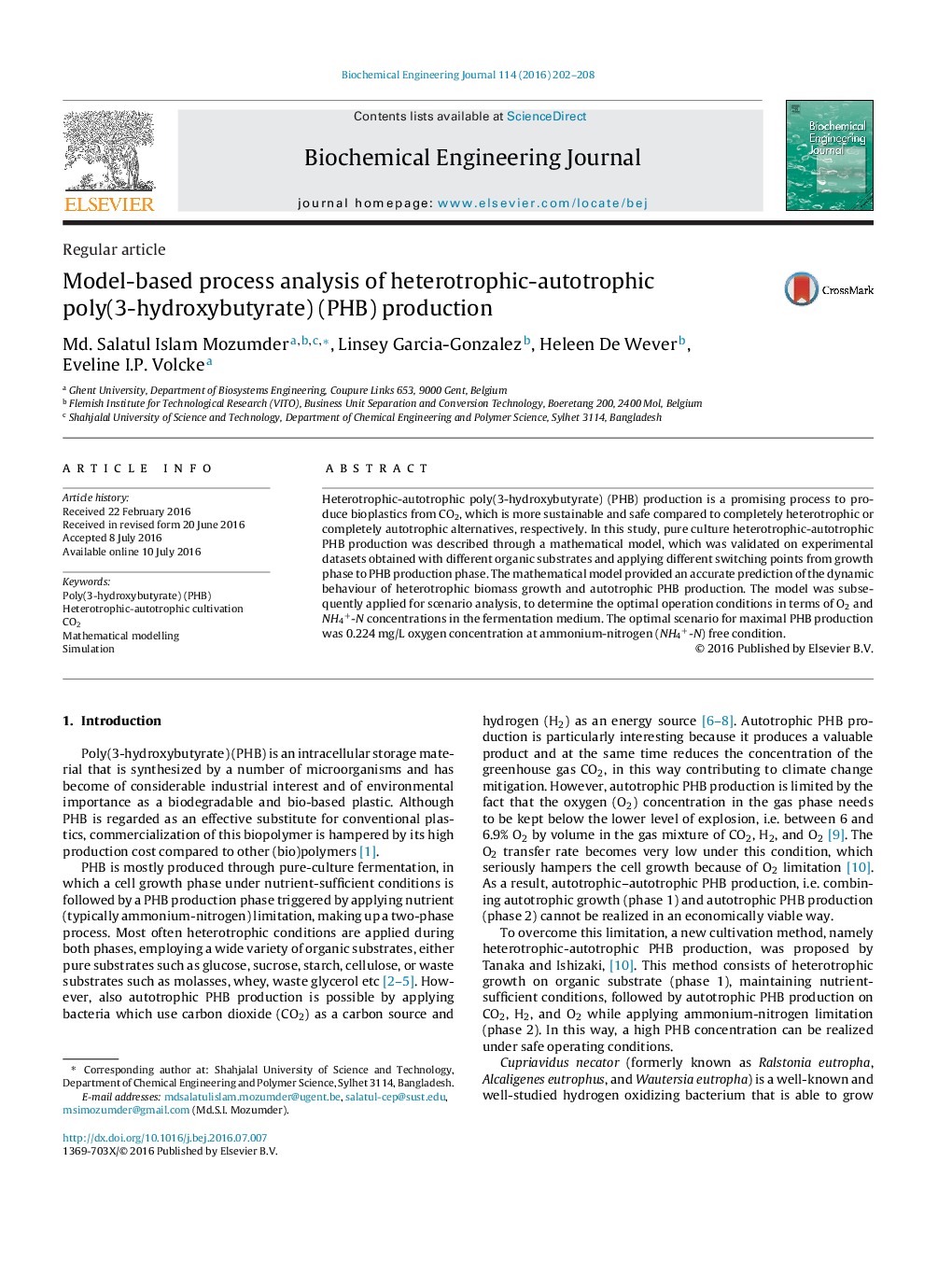| Article ID | Journal | Published Year | Pages | File Type |
|---|---|---|---|---|
| 2690 | Biochemical Engineering Journal | 2016 | 7 Pages |
•A mechanistic model for heterotrophic-autotrophic PHB production is presented and validated.•The type of organic substrate for growth and the length of the heterotrophic phase affect the autotrophic PHB production.•Optimal oxygen and nitrogen conditions levels for biomass growth and PHB production were determined through simulation.
Heterotrophic-autotrophic poly(3-hydroxybutyrate) (PHB) production is a promising process to produce bioplastics from CO2, which is more sustainable and safe compared to completely heterotrophic or completely autotrophic alternatives, respectively. In this study, pure culture heterotrophic-autotrophic PHB production was described through a mathematical model, which was validated on experimental datasets obtained with different organic substrates and applying different switching points from growth phase to PHB production phase. The mathematical model provided an accurate prediction of the dynamic behaviour of heterotrophic biomass growth and autotrophic PHB production. The model was subsequently applied for scenario analysis, to determine the optimal operation conditions in terms of O2 and NH4+-N concentrations in the fermentation medium. The optimal scenario for maximal PHB production was 0.224 mg/L oxygen concentration at ammonium-nitrogen (NH4+-N) free condition.
